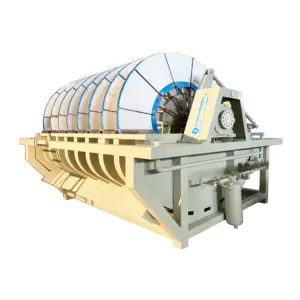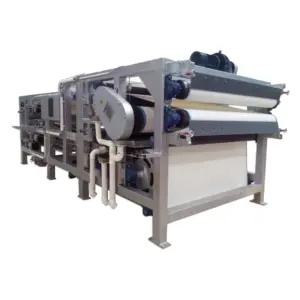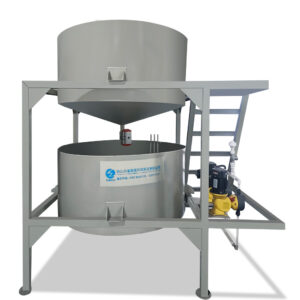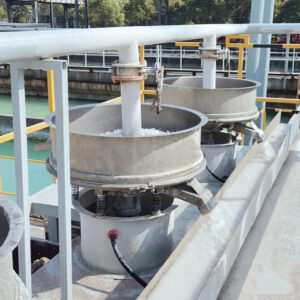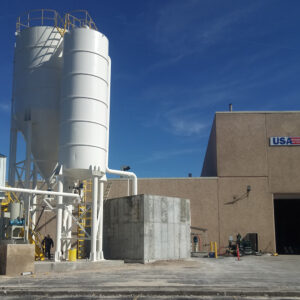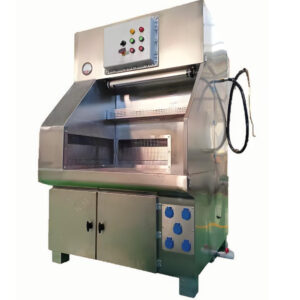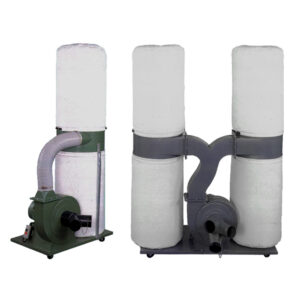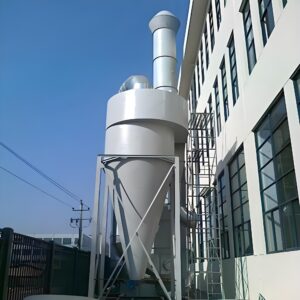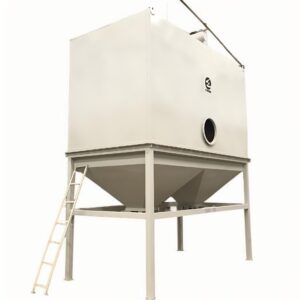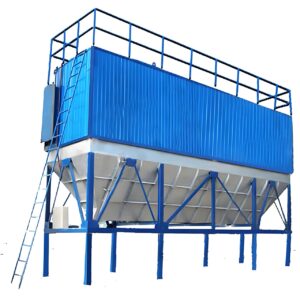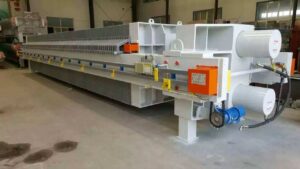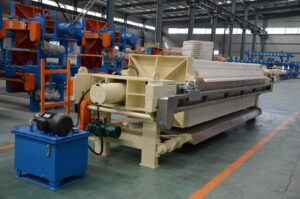Modular dust collector systems have revolutionized the way industries approach air quality management in their facilities. These flexible design options offer a myriad of benefits, from customizable configurations to easy scalability, making them an ideal choice for businesses of all sizes. As environmental regulations become more stringent and workplace safety standards continue to evolve, the importance of efficient dust collection systems cannot be overstated.
The concept of modular dust collector system design has gained significant traction in recent years, primarily due to its ability to adapt to changing needs and environments. Unlike traditional, fixed systems, modular solutions provide the flexibility to reconfigure, expand, or relocate as operational requirements shift. This adaptability not only enhances the system's effectiveness but also contributes to long-term cost savings and improved air quality management.
As we delve deeper into the world of modular dust collector systems, we'll explore the various components, design considerations, and advantages that make these systems a game-changer in industrial air filtration. From compact workshops to large manufacturing plants, the versatility of modular systems offers tailored solutions for diverse applications.
Modular dust collector systems represent a paradigm shift in industrial air quality management, offering unparalleled flexibility and efficiency in design and implementation.
What are the key components of a modular dust collector system?
At the heart of every modular dust collector system lies a set of essential components that work in harmony to ensure optimal air quality. Understanding these elements is crucial for anyone considering implementing or upgrading their dust collection system.
The primary components of a modular dust collector system typically include the filter media, collection hoppers, fan units, and ductwork. Each of these can be customized and scaled according to specific needs, allowing for a truly tailored solution.
One of the most critical aspects of PORVOO modular dust collector systems is the filtration technology. Advanced filter media, such as pleated cartridges or high-efficiency bags, are designed to capture particles of various sizes, ensuring clean air output. The modular nature of these systems allows for easy replacement and upgrades of filter elements, maintaining peak performance over time.
Modern modular dust collector systems can achieve filtration efficiencies of up to 99.99% for particles as small as 0.3 microns, significantly improving air quality in industrial environments.
| Component | Function | Modularity Benefit |
|---|---|---|
| Filter Media | Particle capture | Easy replacement and upgrade |
| Collection Hoppers | Dust storage | Scalable capacity |
| Fan Units | Air movement | Adjustable airflow |
| Ductwork | Air transport | Flexible configuration |
In conclusion, the key components of a modular dust collector system work together to create a flexible, efficient, and customizable solution for industrial air quality management. The ability to adjust and upgrade these components as needed ensures that the system can evolve with changing requirements, making it a valuable long-term investment for any facility.
How does modular design enhance system flexibility?
The essence of modular dust collector system design lies in its inherent flexibility. This innovative approach allows for a level of customization and adaptability that was previously unattainable with traditional, fixed systems. By breaking down the dust collection system into modular components, businesses can tailor their setup to perfectly match their specific needs and spatial constraints.
Modular design enhances system flexibility by allowing for easy expansion, reconfiguration, and relocation. As a facility's needs change or grow, additional modules can be seamlessly integrated into the existing system without the need for a complete overhaul. This scalability is particularly beneficial for businesses experiencing growth or those with fluctuating production demands.
The Modular dust collector system design approach also facilitates more efficient maintenance and upgrades. Individual components can be replaced or updated without affecting the entire system, reducing downtime and maintenance costs. This modularity extends to the installation process as well, often resulting in quicker setup times and less disruption to ongoing operations.
Modular dust collector systems can reduce installation time by up to 50% compared to traditional fixed systems, minimizing operational disruptions and accelerating return on investment.
| Flexibility Aspect | Traditional System | Modular System |
|---|---|---|
| Expansion | Limited, often requires full replacement | Easy addition of modules |
| Reconfiguration | Difficult and costly | Simple and cost-effective |
| Maintenance | System-wide downtime | Isolated component maintenance |
| Upgrades | Often requires full system upgrade | Component-specific upgrades possible |
In summary, the modular design approach significantly enhances the flexibility of dust collector systems. It offers businesses the ability to adapt their air quality management solutions to changing needs, space constraints, and technological advancements. This flexibility not only improves operational efficiency but also ensures that the dust collection system remains effective and compliant with evolving regulations over time.
What are the advantages of customizable configurations?
Customizable configurations are a hallmark of modular dust collector systems, offering a range of advantages that cater to the unique needs of different industries and facilities. This level of customization allows businesses to create a dust collection solution that is perfectly tailored to their specific requirements, resulting in improved efficiency and performance.
One of the primary benefits of customizable configurations is the ability to optimize space utilization. Modular systems can be designed to fit into challenging spaces or to work around existing equipment, making them ideal for facilities with limited floor space or complex layouts. This flexibility in design ensures that dust collection doesn't come at the expense of valuable production area.
Moreover, customizable configurations enable businesses to address specific dust collection challenges unique to their operations. For instance, a woodworking shop might require a different configuration than a metalworking facility due to variations in particle size and composition. The modular approach allows for the selection of appropriate filter media, fan capacities, and collection methods to match these specific needs.
Custom-configured modular dust collector systems can improve collection efficiency by up to 30% compared to one-size-fits-all solutions, leading to cleaner air and reduced energy consumption.
| Customization Aspect | Benefit |
|---|---|
| Filter Media Selection | Targeted particle capture |
| Fan Capacity | Optimized airflow for specific needs |
| System Layout | Efficient space utilization |
| Collection Methods | Tailored to dust type and volume |
In conclusion, the advantages of customizable configurations in modular dust collector systems are substantial. They allow for optimized performance, efficient use of space, and the ability to address industry-specific challenges. This level of customization not only improves the effectiveness of dust collection but also contributes to overall operational efficiency and compliance with air quality standards.
How does scalability factor into modular system design?
Scalability is a crucial aspect of modular dust collector system design, providing businesses with the flexibility to adapt their air quality management solutions as their needs evolve. This feature is particularly valuable in industries where production volumes may fluctuate or where future expansion is anticipated.
The scalable nature of modular systems allows for both incremental and significant capacity increases without the need for a complete system overhaul. This is achieved through the addition of modular components such as filter units, fans, or ductwork sections. As a result, businesses can start with a system that meets their current needs and expand it over time, aligning their investment with growth.
Furthermore, scalability in modular design extends beyond just capacity increases. It also encompasses the ability to upgrade technology or enhance performance as new innovations become available. This future-proofing aspect ensures that the dust collection system remains efficient and compliant with evolving regulations over its lifetime.
Modular dust collector systems can typically be scaled up by 25-50% of their initial capacity without major structural changes, providing a cost-effective path for business growth.
| Scalability Aspect | Benefit |
|---|---|
| Capacity Increase | Gradual expansion to match growth |
| Technology Upgrades | Easy integration of new innovations |
| Performance Enhancement | Ability to improve efficiency over time |
| Regulatory Compliance | Adaptability to changing standards |
In conclusion, scalability is a key factor in the design of modular dust collector systems, offering businesses the flexibility to grow and adapt their air quality management solutions. This feature not only provides a cost-effective approach to system expansion but also ensures that the dust collection system can evolve alongside the business, maintaining optimal performance and compliance throughout its lifecycle.
What role does energy efficiency play in modular system design?
Energy efficiency is a critical consideration in the design of modular dust collector systems, playing a significant role in both environmental sustainability and operational cost-effectiveness. As industries increasingly focus on reducing their carbon footprint and energy consumption, the efficiency of dust collection systems has become a key factor in system selection and design.
Modular dust collector systems are inherently designed with energy efficiency in mind. The ability to customize and optimize each component of the system allows for the selection of energy-efficient motors, fans, and filtration media. This targeted approach ensures that the system operates at peak efficiency for the specific dust collection requirements of the facility.
One of the primary ways modular systems contribute to energy efficiency is through advanced control systems. These intelligent controls can adjust fan speeds and filtration parameters based on real-time dust load, minimizing energy consumption during periods of low activity. Additionally, the modular nature of these systems allows for easy integration of energy-saving technologies as they become available.
Properly designed modular dust collector systems can reduce energy consumption by up to 40% compared to traditional fixed systems, resulting in significant cost savings and reduced environmental impact.
| Energy Efficiency Feature | Impact |
|---|---|
| Variable Frequency Drives | Optimal fan speed control |
| High-Efficiency Motors | Reduced power consumption |
| Advanced Filtration Media | Lower pressure drop, less energy needed |
| Intelligent Control Systems | Real-time optimization of system performance |
In conclusion, energy efficiency plays a crucial role in the design and operation of modular dust collector systems. By incorporating energy-saving features and allowing for ongoing optimization, these systems not only contribute to sustainability goals but also offer significant long-term cost benefits. The focus on energy efficiency in modular design ensures that businesses can maintain clean air quality without compromising on operational efficiency or environmental responsibility.
How do modular systems address maintenance and serviceability?
Maintenance and serviceability are critical aspects of any industrial equipment, and modular dust collector systems excel in this area. The design of these systems inherently facilitates easier maintenance procedures and more efficient servicing, which translates to reduced downtime and lower long-term operational costs.
One of the key advantages of modular systems is the ability to isolate individual components for maintenance or replacement without affecting the entire system. This targeted approach allows for routine maintenance to be carried out with minimal disruption to overall operations. For instance, filter cartridges can be replaced in sections, ensuring that dust collection continues in other parts of the system.
Moreover, the standardized nature of modular components often means that spare parts are more readily available and interchangeable. This standardization simplifies inventory management and reduces the time required to source replacement parts. Many modular systems also incorporate user-friendly features such as tool-free access panels and quick-release mechanisms, further streamlining maintenance procedures.
Modular dust collector systems can reduce maintenance-related downtime by up to 60% compared to traditional systems, significantly improving overall operational efficiency.
| Maintenance Feature | Benefit |
|---|---|
| Isolated Component Access | Minimal system disruption during maintenance |
| Standardized Parts | Simplified inventory and quicker replacements |
| Tool-Free Access | Faster and easier routine maintenance |
| Modular Filter Replacement | Continuous operation during partial servicing |
In conclusion, modular dust collector systems address maintenance and serviceability concerns through their inherent design features. By facilitating easier access, standardizing components, and allowing for targeted maintenance, these systems minimize downtime and simplify upkeep procedures. This approach not only reduces the overall cost of ownership but also ensures that the dust collection system remains in optimal condition, consistently delivering high-quality air filtration.
What considerations are important for system integration and installation?
When it comes to integrating and installing modular dust collector systems, several key considerations must be taken into account to ensure optimal performance and seamless operation within existing facilities. The flexibility of modular design offers numerous advantages during the integration process, but careful planning is essential to maximize these benefits.
One of the primary considerations is the physical layout of the facility. Modular systems allow for creative configurations that can work around existing equipment and structural elements. This adaptability is particularly valuable in retrofit situations where space may be limited. Careful assessment of the available space and potential installation locations is crucial for designing an efficient system layout.
Another important aspect is the integration with existing ventilation and production systems. Modular dust collectors must be compatible with current ductwork and air handling systems to ensure proper airflow and collection efficiency. This often involves detailed airflow analysis and possibly upgrades to existing infrastructure to accommodate the new system.
Proper integration of modular dust collector systems can improve overall plant efficiency by up to 20% through optimized airflow and reduced energy consumption.
| Integration Consideration | Impact |
|---|---|
| Facility Layout | Optimized space utilization |
| Existing Infrastructure | Compatibility with current systems |
| Airflow Analysis | Improved collection efficiency |
| Future Expansion | Allowance for system growth |
In conclusion, successful integration and installation of modular dust collector systems require careful consideration of various factors, including facility layout, existing infrastructure, and future expansion plans. By addressing these considerations during the planning phase, businesses can ensure a smooth integration process, minimizing disruptions and maximizing the benefits of their new dust collection system. This thoughtful approach to system integration not only enhances immediate performance but also sets the stage for long-term efficiency and scalability.
Conclusion
Modular dust collector systems represent a significant advancement in industrial air quality management, offering unparalleled flexibility, efficiency, and scalability. Throughout this exploration of modular system design, we've uncovered the numerous advantages these systems provide, from customizable configurations to enhanced energy efficiency and simplified maintenance.
The key components of modular systems, including advanced filtration media, adjustable fan units, and flexible ductwork, work in harmony to create a tailored solution for diverse industrial needs. The inherent flexibility of modular design allows businesses to adapt their dust collection systems as operational requirements change, ensuring long-term relevance and effectiveness.
Customizable configurations enable businesses to optimize their dust collection systems for specific challenges and space constraints, while the scalability of modular designs facilitates easy expansion and technology upgrades. This future-proofing aspect is particularly valuable in today's rapidly evolving industrial landscape.
Energy efficiency, a critical concern for modern industries, is significantly improved through the use of modular systems. Advanced control systems, high-efficiency components, and the ability to optimize performance based on real-time needs contribute to reduced energy consumption and operational costs.
Maintenance and serviceability are streamlined in modular systems, with features like isolated component access and standardized parts reducing downtime and simplifying upkeep procedures. This ease of maintenance ensures that dust collection systems remain in optimal condition, consistently delivering high-quality air filtration.
Finally, the considerations for system integration and installation highlight the importance of careful planning to maximize the benefits of modular dust collector systems. By addressing factors such as facility layout and existing infrastructure, businesses can ensure a smooth integration process and set the stage for long-term efficiency.
In conclusion, modular dust collector systems offer a comprehensive solution for industrial air quality management, combining flexibility, efficiency, and scalability. As industries continue to prioritize environmental responsibility and operational efficiency, these systems stand out as a forward-thinking choice for businesses of all sizes. The adoption of modular dust collector systems not only addresses current air quality challenges but also positions businesses to meet future environmental regulations and operational demands with confidence.
External Resources
Modular Dust Collection System Design | Camfil APC – This article discusses the flexibility and benefits of modular dust collection system design, including ease of movement, customization to fit specific work environments, and the ability to expand as operations grow.
Industrial Dust Collection | Dust Collectors | Collection Systems – This resource provides a comprehensive overview of dust collection system design, including key components, considerations for maintaining airflow and minimizing pressure losses, and the importance of explosion protection.
The Ultimate Guide to Dust Collector Duct Design – This guide details the steps to design a dust collector duct system, including assessing workshop space, determining CFM requirements, and sizing ducting to ensure efficient airflow.
Modular Baghouse Dust Collector – Donaldson Company – This page describes the features and benefits of modular baghouse dust collectors, such as walk-on top access and walk-in clean-air plenums, and highlights their efficient design for reducing bag abrasion.
Designing an Efficient Dust Collection System – Spiral Manufacturing – This article outlines the phases of designing a dust collection system, including sizing ductwork and calculating static pressure, and provides a detailed example of the design process.
Dust Collection System Design: Key Considerations – Although from the same source as the second link, this section focuses specifically on key considerations such as maintaining airflow, minimizing noise and pressure losses, and selecting proper materials for the system.
How to Design a Dust Collection System – This resource from the same guide as the third link, emphasizes the importance of a top-down view sketch, determining total CFM requirements, and positioning the main duct line for optimal efficiency.
Power Core® Dust Collectors – Donaldson Torit – This section highlights the advanced design of Power Core® dust collectors, featuring Ultra-Web® filter media and an enhanced filter cleaning system, which reduces filter size and maintenance costs while increasing efficiency.
